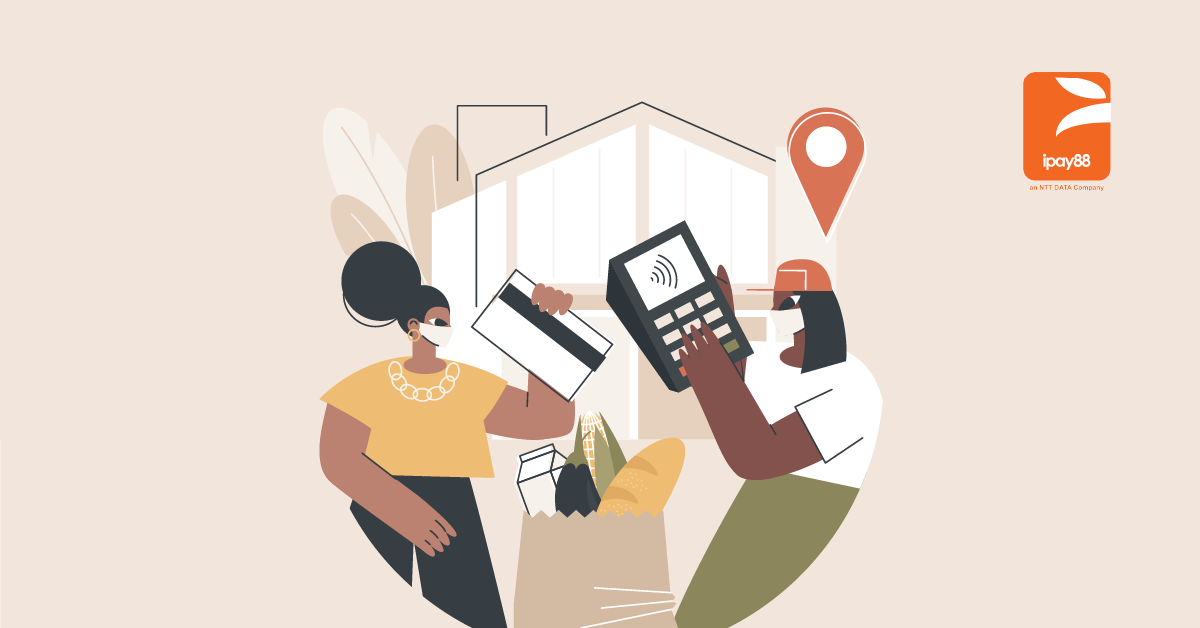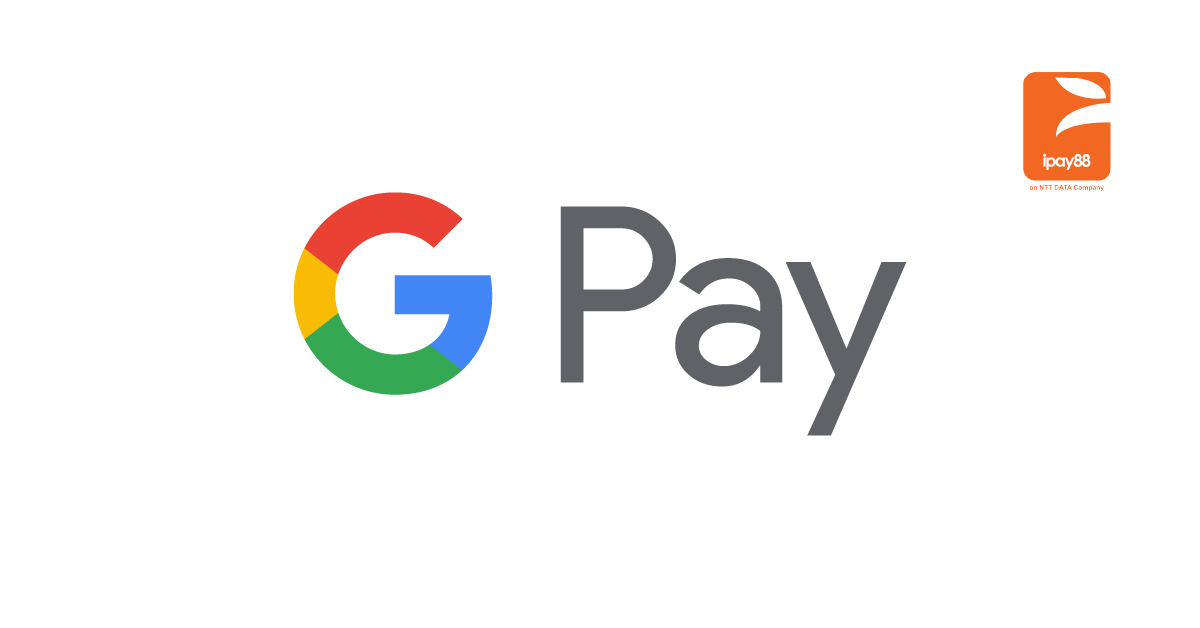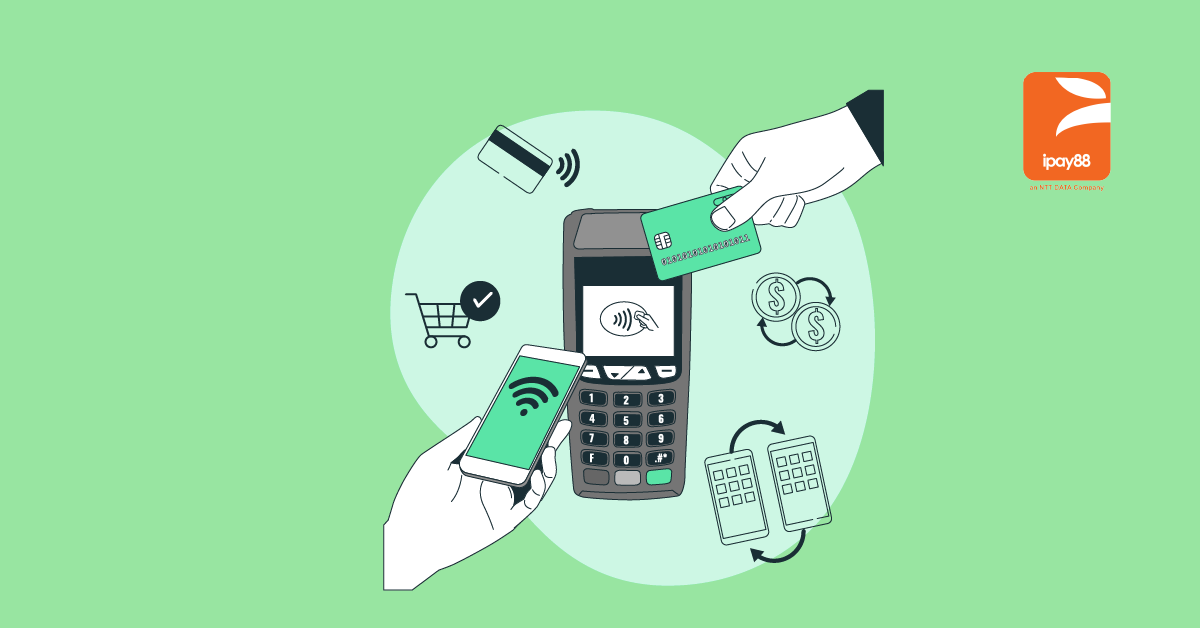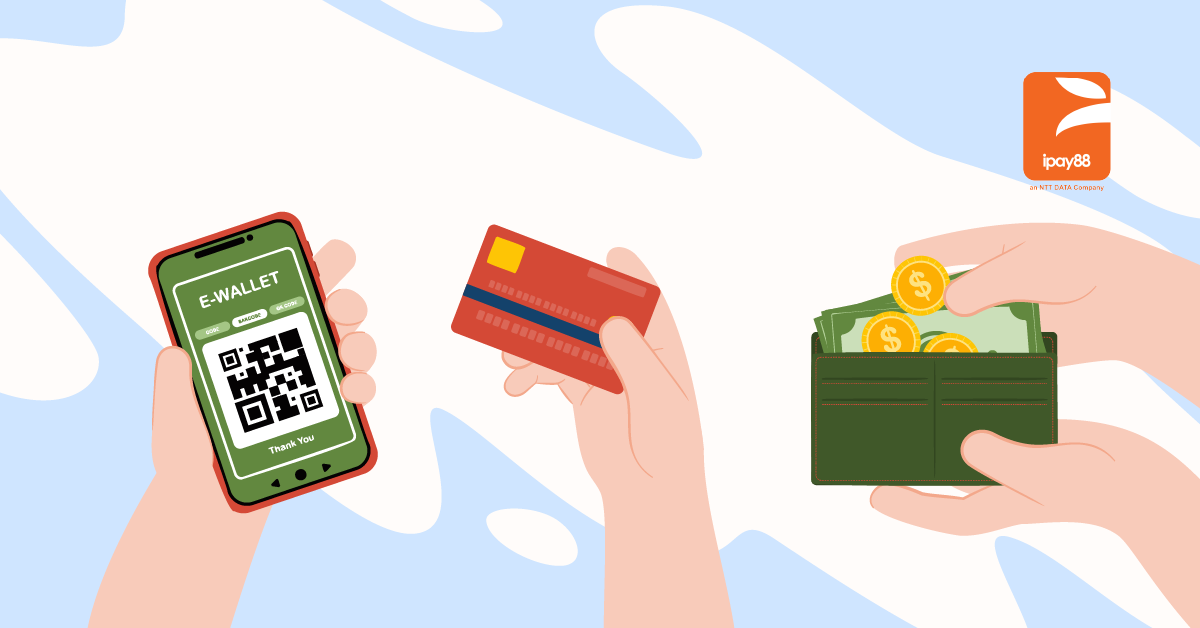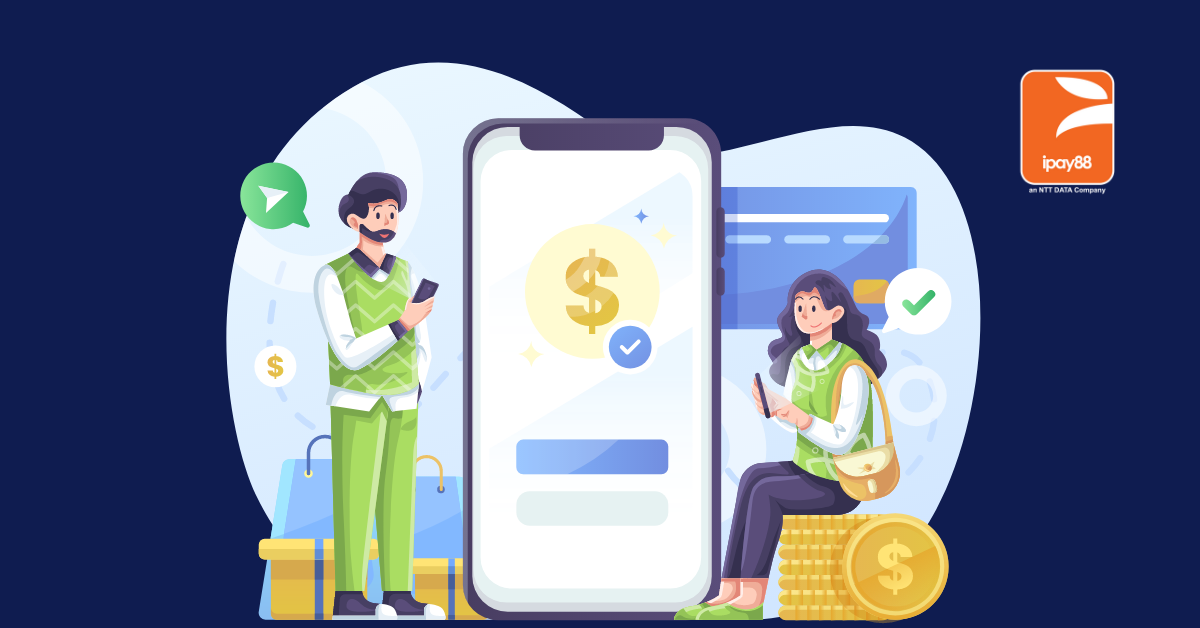The e-commerce landscape has exploded in Malaysia over the past few years. The revenue generated in the e-commerce market is projected to reach US$9.95bn in 2023. As a result of this continuous growth in e-commerce, the cashless payment trend is also on the rise.
Today, it’s safe to say that cashless transactions have been taking a leading part in the financial outlook in Malaysia. Consumers are increasingly used to transacting with their phones and bank cards instead of using traditional payment methods, such as cash.
We are confident you have heard a lot about cashless payments; what is a cashless payment, but how do they work? Are cashless payments free? Which types of cashless payments are out there? Finally, what are the advantages for companies.
In this article, we’ll answer these main questions related to cashless payments.
What is a cashless payments?
Cashless payments are all about leaving your physical cash at home and embracing the convenience of digital transactions.
Instead of paying with coins or bills, you use electronic methods like credit cards, debit cards, mobile wallets, or even digital currencies.
Picture this: you’re at a cafe, and instead of digging through your wallet for cash, you simply tap your card or scan your phone to settle the bill. It’s fast, secure, and saves you from carrying a bulky wallet. Plus, it’s perfect for online shopping—you can make purchases with just a few clicks.
Cashless payments make life easier, whether you’re grabbing a coffee or shopping online, offering a seamless and hassle-free way to handle your finances in today’s digital age.
How do cashless payments work?
As the name suggests, cashless payments are a type of payment that is made without using any physical cash. Normally, the buyer authorizes the transfer of the payment amount with a PIN; however, today, payments can also be made without such authorization (e.g., by tapping your payWave card on the merchant’s terminal).
Essentially, electronic payments require transferring primary payment-related data (such as the amount to be transferred, time of the transfer, etc.) to move the money from the payer’s bank account to the recipient’s account.
There are multiple types of cashless payments, and they work differently. Let’s take a look at the main ones.
1. Cashless payments with bank cards
In a physical retail store, a terminal is equipped with hardware to read the chip or magnetic strip on the card to process the account information. When using the chip and pin, the buyer authorizes the transactions by entering the PIN code into the terminal.
After the authorization, the payment amount is first reserved on the buyer’s account; then, the acquirer (like iPay88) transfers the money into the merchant’s account.
2. Contactless payments
Contactless payments speed up the transaction as they don’t require authorization by PIN code. Most current bank cards are equipped with an NFC chip (New Field Communication), which transmits the account information to the terminal. The transaction is done by tapping the buyer’s bank card on the merchant’s terminal.
Contactless payments are usually allowed for lower-value purchases (under RM250). However, they can still be performed for transactions over RM250 – only that the buyer will be asked to key in their PIN code to authorize the payment.
3. E-wallet payments
There are many e-wallets available for Malaysian merchants and users. Some of the biggest ones are GrabPay, Boost, Touch ‘n Go e-wallet, MAE by Maybank, ShopeePay, and others. These wallets are pre-paid, meaning that in order to transact, the users will have to transfer the money from a bank account into the e-wallet.
E-wallet payments and mobile payments are prevalent in both – e-commerce and physical retail. In retail stores, they often require a scan of a merchant’s QR code (consumer-scan model) or a merchant to scan the consumer’s QR code (merchant-scan model). While in e-commerce, the user will be required to authorize the transaction by signing into their e-wallet and keying in the PIN.
Are cashless payments free?
Cashless payments aren’t free for merchants; they are free for shoppers, though. Merchants are required to pay a Merchant Discount Rate (MDR) for each transaction that is performed. It’s a percentage that includes fees by card schemes (Visa, MasterCard, Amex, etc.), acquiring and issuing banks, and payment gateways.
While cashless payments incur a small fee for merchants, they are considerably cheaper than operating and managing cash.
Having digital payments in place allows merchants to save on cash management and storage facilities, such as safes and cash depositories. Not to mention, time and vast human resources are also required to safeguard and transport large amounts of cash into banks in order to deposit them.
Manual calculation of cash for financial reconciliation may also open space for human error and tedious checking procedures, which require additional time and human resources as well.
So, even though cashless payments incur a small fee for merchants, it’s way cheaper to operate and manage. By saving time and resources, businesses can concentrate on other things that help them grow.
What are some examples of cashless payments?
1. Cashless Payment on Digital Kiosk
2. Cashless Payment on Vending Machine
3. E-wallet as Cashless Payments
4. Bank Card as Cashless Payment
iPay88 works with industry leaders to provide the latest cashless payment solutions to our merchants. Our partners can help digitalize customer experiences and provide innovative payment solutions that help your business grow.
What are the advantages of cashless payments?
Based on the Visa Consumer Payment Attitudes study published in 2022, 55% of Malaysian consumers can go about their daily lives without using any cash for up to one week. This is an increase of 13% if compared to the previous year.
Therefore, it goes without saying that the advantages of cashless payments outweigh the disadvantages, and consumers have noticed that.
So, you may wonder what advantages cashless payments can bring to your business. Below we want to share the main three.
1. Easy financial reconciliation and tracking
One of the most time-consuming activities for businesses is financial reconciliation. The amount of time it takes to count cash and ensure that the figures match is astonishing! Such a manual job also requires a lot of human resources.
However, businesses that accept cashless payments via iPay88 can simplify their financial reconciliation by checking live reports available at iPay88 Merchant Portal. These reports will break down which payment methods were used, will also highlight if the transactions were unsuccessful, and can also give valuable insights on returning customers.
2. Forget payment slip confirmations for bank transfers
Even though bank transfers are a part of cashless payments, having a payment gateway will give your customers a better customer purchasing experience. The transactions can be completed on your website with a real-time notification to you that the payment has been captured.
After receiving the notification, your team may fulfill the order, e.g., prepare for the shipment of goods or delivery of services.
Long gone are the days when shoppers make bank transfers and send payment confirmation slips. Today’s shoppers don’t have the patience to wait; they want to get their purchases as quickly as possible, thus eliminating unnecessary steps (such as checking payment confirmation slips before fulfilling the order) will enhance your customers’ experience.
The bank-in approach is outdated and even less and less used in B2B relations. At iPay88, we have created innovative solutions to capture Invoice Payments for B2B merchants. Upon receiving an invoice, your business customer can click on the link on your invoice and pay. The payment will be captured immediately, and you can start the fulfillment process in no time.
3. Improved customer experience
Customer experience is one of the most significant factors impacting your business growth. Poor customer experience may result in high customer churn and loss of opportunities. The good news is that digital payments can improve your customer experience dramatically.
As the popularity of cashless payments increases, more and more customers expect merchants to accept these payments as well. As a result, customer satisfaction may decrease if a merchant doesn’t accept the customer’s favorite payment method (e.g., e-wallet). Chances are high that this customer will choose another merchant who can cater to their payment needs.
On top of that, cashless payments are quicker, resulting in shorter queues in shops, restaurants, and other establishments. For this reason, queues caused by counting cash and change may impact the overall customer experience, resulting in shoppers choosing other places to do business.
Ready to accept cashless payments?
We hope that this article has given you a better understanding of what cashless payments are and how they can help you grow your business. The acceptance of digital payments will only continue to grow nationwide.
There are multiple ways you can start accepting cashless payments. As shown, they include smart terminals, kiosks, vending machines, point-of-sale systems, payment apps, and more.
You can also choose from a vast selection of multiple payment methods available to iPay88 merchants: bank cards, e-wallet payments, Google Pay, Apple Pay, Online Banking, DuitNow QR, and more.
No matter your preference, iPay88, as a leading payment services provider, is always ready to consult and offer the best option for your business.
We’d like to invite you to contact us to find out more and embark on a cashless journey with us!

